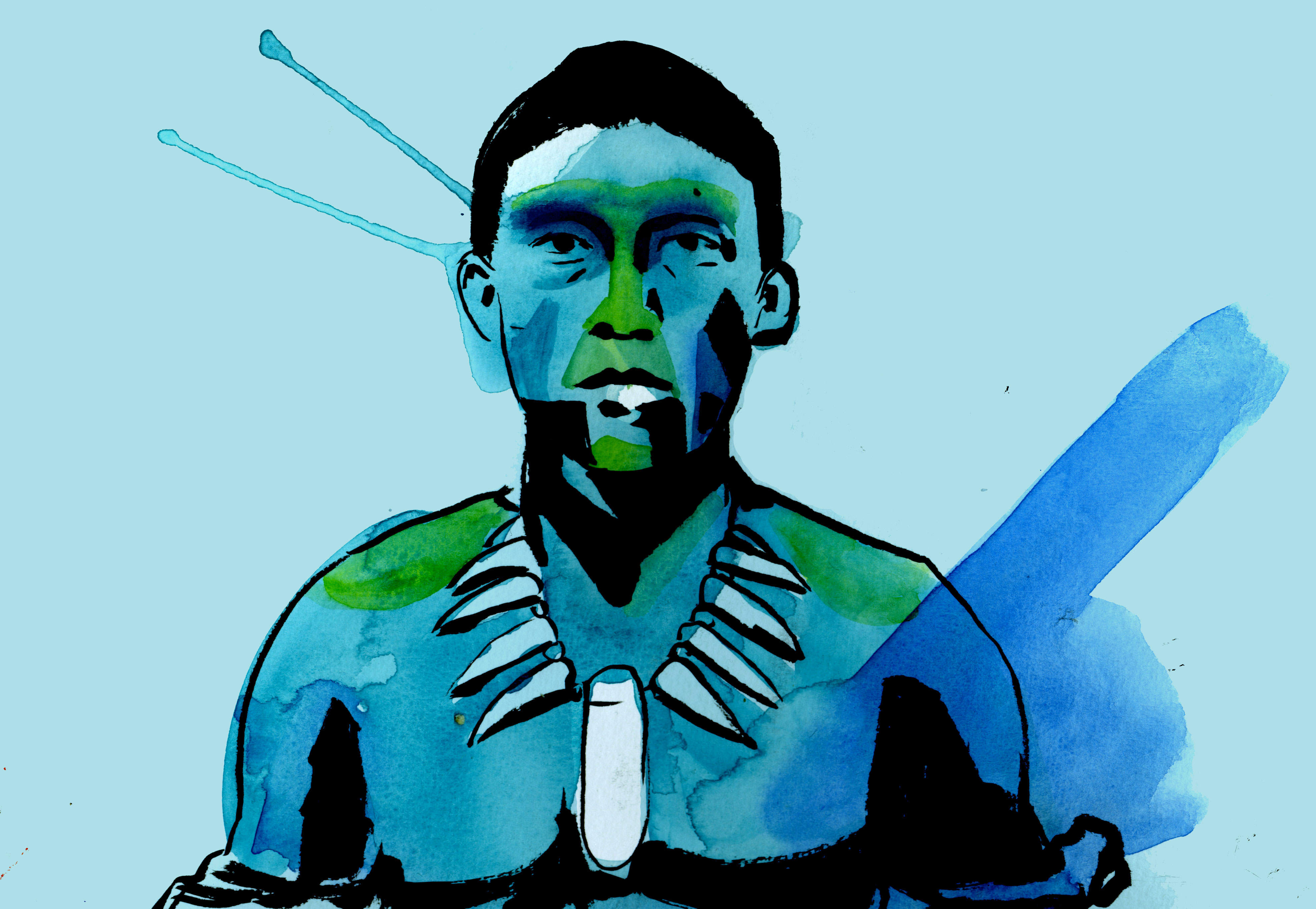
The ominous rainforest reflects upon the Amazon river in the opening scene of Colombian director Ciro Guerra’s 2016 film, “Embrace of the Serpent.” As the viewer confronts this warped and unrecognizable reflection, the image shifts upwards, where the film’s protagonist, Karamakate (Nilbio Torres) stands encased by the forest and completely alone.
Shot in black-and-white and a bit grainy, these opening scenes are reminiscent of a series of ethnographic photographs taken by Theodor Koch Grunberg in the early 20th Century. Grunberg, who was a German ethnographer who explored this region, was the inspiration for the film’s protagonist. Although this the film is, indeed, based on these European men and their research, “Embrace of the Serpent” completely flips the narrative of colonization and the depletion of indigenous peoples through white man’s evil, allowing the native Amazonian people to reclaim their story.
Karamakate meets Theo (Jan Bijvoet) when Theo and his guide Manduca (Yauenkü Migue) arrive on a canoe near Karamakate’s home in 1909. Theo is sick and asks for help, and Karamakate reluctantly agrees to take him to find the yukruna plant, the only cure for his disease, as long as Theodor leads him back to his people. Then the film adds a new narrative in a completely different time; the viewer is transported to 1940, where a young American traveler on his own “Into the Wild”-type adventurer rows up to a now elderly Karamakate (Antonio Bolivar). The traveler, Richard Evan Schultes (Brionne Davis), speaks to Karamakate as the now old man draws on a rock, and Karamakate replies “You can see me?” The white traveler, again, asks if the shaman can help him find the yukruna plant. Karamakate, who is now old and yet still very alone, agrees.
The few white characters in this film are continuously the root of conflict — which allows for contemplation around the loose justifications of early colonialism, and the power relations between two culturally isolated groups. Karamakate levels himself as an equal with the travelers in each of the time periods — if not as an authoritative teacher.
However, Manduca and Theo have a problematic relationship, with flaws disguised as loyalty. Manduca is essentially Theo’s unpaid caregiver. Karamakate repeatedly shows his disgust towards Manduca’s treatment, and expresses his distaste for the violence white men have brought on their land and people. Slowly Theo sees the harm in his actions, as does Evan in his later story.
In the most crucial scene of the film, Theo reacts violently to his compass being stolen. A bystander thinks he simply needs it to travel onwards, but Theo expresses the need to not share this knowledge with these indigenous people to continue their nonwestern tradition of navigation. We begin to not only see the Western intellectual superiority complex that Theo embodies, but his complex view of the native peoples. By excluding them from western knowledge, he hopes to keep their culture pure, but is quickly reminded of the non-exclusive nature of human knowledge and growth.
Ultimately, “Embrace of the Serpent” is built upon the idea of pastness, and the use of historical details in the film is evident and well done. Guerra guides the audience through two relatively unknown narratives where indigenous peoples spread knowledge to their white counterparts. The representational flip is even more relevant today in the midst of our political climate, and the film uses this remembrance of the past to advocate for contemporary issues.
A viewer cannot help feel sympathetic about the rapid deforestation of the Amazon, or the current battles between white power structures and indigenous peoples in both Columbia and the United States. Guerra’s use of imagery, conflict, and indigenous languages allows for a clear conversation around the current state of these lost people, in a world that hasn’t changed much since Theo arrived on the canoe.







